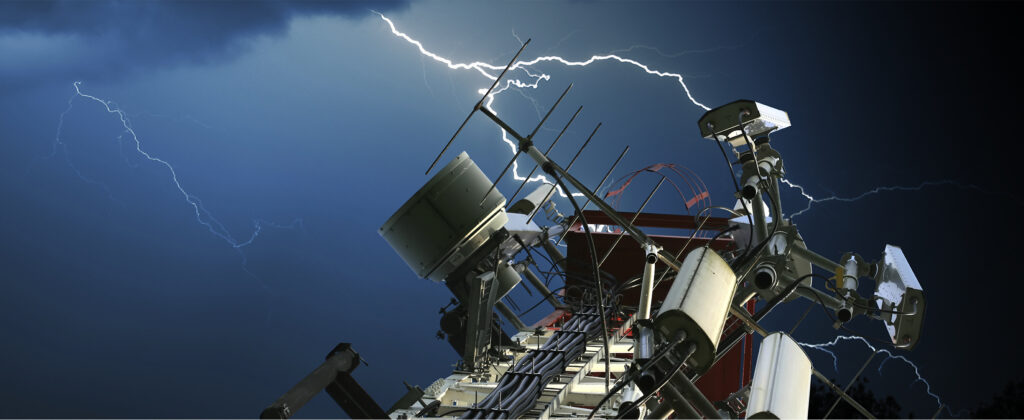Those familiar with the industrial surge protection industry understand the importance of the Strikesorb technology developed by Raycap for the protection of mission-critical distributed base station architectures. A cell tower is a prime target for lightning strikes simply due to the combination of height and metal in the construction, along with their often being positioned within areas that do not feature equally tall structures. In essence, the necessary components needed to provide adequate cellular service signals also attract lightning, and the probability of a strike on or near a tower is quite good. Even if critical signaling components on top of towers or rooftops “already have built-in protection” smart operators know that it is crucial to install Raycap’s industrial strength DC surge protection systems to guard against the intense and often repetitive electrical surges that come with a lightning strike. Raycap connectivity and protection solutions for RRH networks protect the sensitive equipment within the cell site which would almost certainly be damaged by a lightning surge. The Strikesorb technology developed by Raycap is deployed by many cellular network operators worldwide, and is recognized as the finest remote radio head (RRH) surge protection solution on the market.
The conductive path between the RRH and base band unit (BBU) within distributed base station architecture involves power cables made of either copper or copper/fiber hybrid combination to connect the radios to the BBU. These cables are fed from the base to the top of the structure in order to power and connect the parts of the RRH system, and while the lines are ideal for the typical power levels necessary for ongoing operation, they also serve as a perfect conductor for electrical surges. These surges must be mitigated in order to avoid damage to the sensitive equipment, and the surge protection must be robust enough to protect against multiple strikes. Raycap’s Strikesorb technology provides this protection from strikes to the tower itself, the tower top or from coupled strikes where the surge enters the cables through a strike to the structure.
Cellular networks including 4G, 2G and 3G are all being protected by the superior quality of the Raycap line of products. Cellular networks are all in the business of creating the lowest capital expenditures (Capex) as well as the lowest operational expenditures (Opex) through maintenance procedures that are intended to extend the lifespan of all equipment to its maximum levels. While these expenditures must be figured into the ongoing operational costs, the reduction of equipment failure costs as much as possible through the installation of RRH surge protection equipment can leverage technology to a point of over-performance on the part of equipment, and a bottom line savings that can be substantial and significant.
Raycap is a specialist in the telecommunications surge protection space, and features a suite of products and configurations that provide customers flexibility regardless of their network architecture. Lightning surges and electrical transients are always going to be a threat to the cellular networks, however with the proper planning and the right partner risks can be mitigated to manageable levels. Raycap surge protection systems are proven to be the best solutions for cellular networks using next generation RRH architectures.

